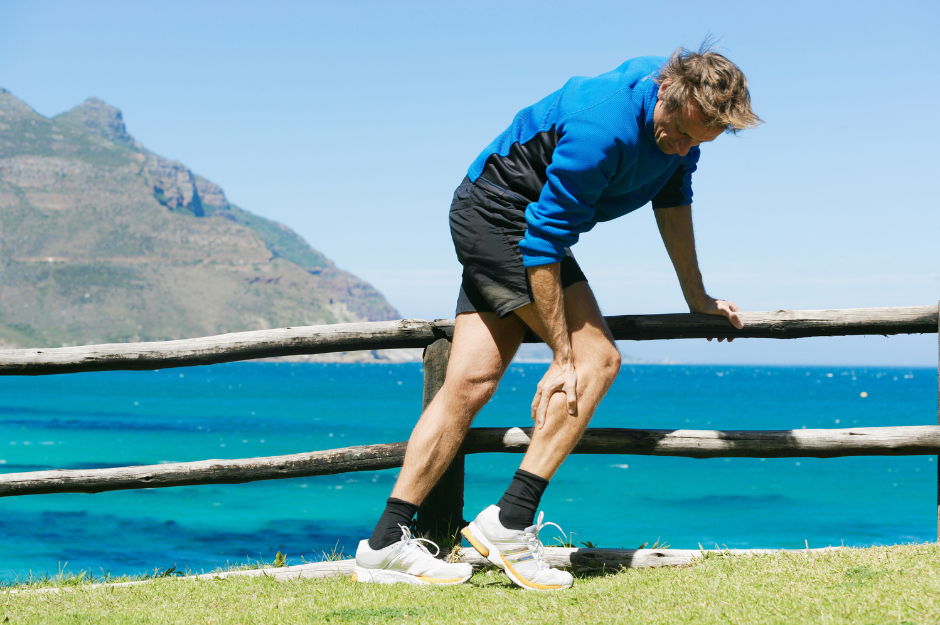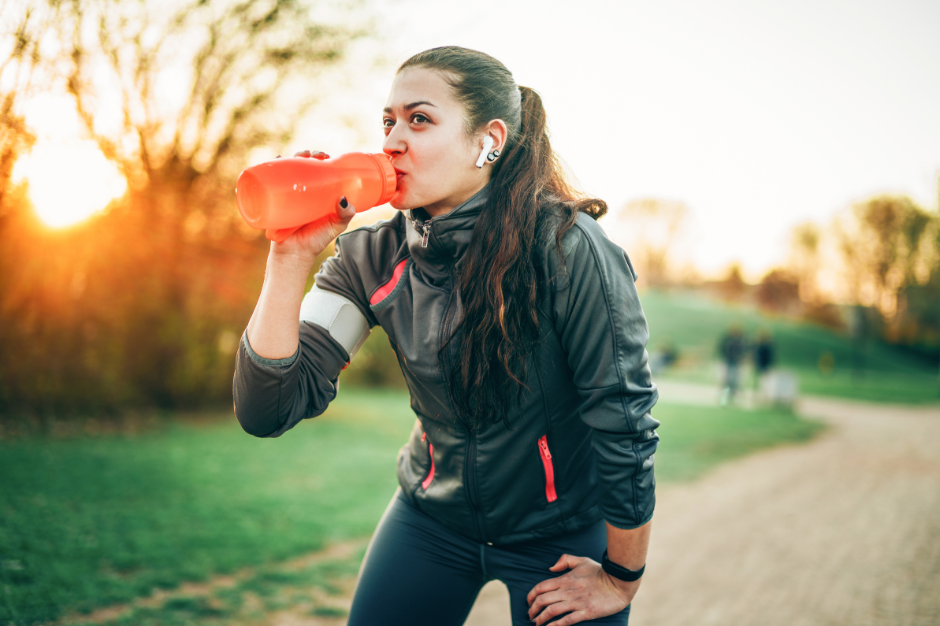

Nutritional Tips for Postpartum Athletes Returning to Sport
We chat with Nicole Farnsworth about returning to peak performance postpartum, busting myths about exercise and milk supply and sharing nutritional tips for balancing sport and postpartum.
July 31 , 2024

Nicole Farnsworth, MS, RD, CSSD, LDN
Nicole Farnsworth is a board-certified sports dietitian and a Clinical Nutrition Specialist with the Wu Tsai Human Performance Alliance Female Athlete Program and Division of Sports Medicine at Boston Children’s Hospital.

Kate Grace, Professional Athlete
Kate Grace is a U.S Olympian and Nike track athlete, specializing in middle distance running. She competes in both the 800 meters and 1500 meters.
“On your marks” calls a voice through the loudspeaker, as the runners settle into their positions on the track. Among them is Kate Grace, an American middle-distance runner. In 2016, Grace’s remarkable speed earned her the 800 meters title at the Rio Olympic trials, securing her spot on the U.S. Olympic team.
Fast forward to 2024. Sixteen months after giving birth to her son, Grace is back at the starting line. The sharp crack of the starting gun reverberates through the stadium and the runners explode into motion. At 35, she was racing again in the finals of the U.S. Olympic trials.
“When I first got pregnant, I told myself that postpartum, you could be stronger than you were before,” said Kate Grace.
So, what does the scientific literature say about returning to peak performance after childbirth?
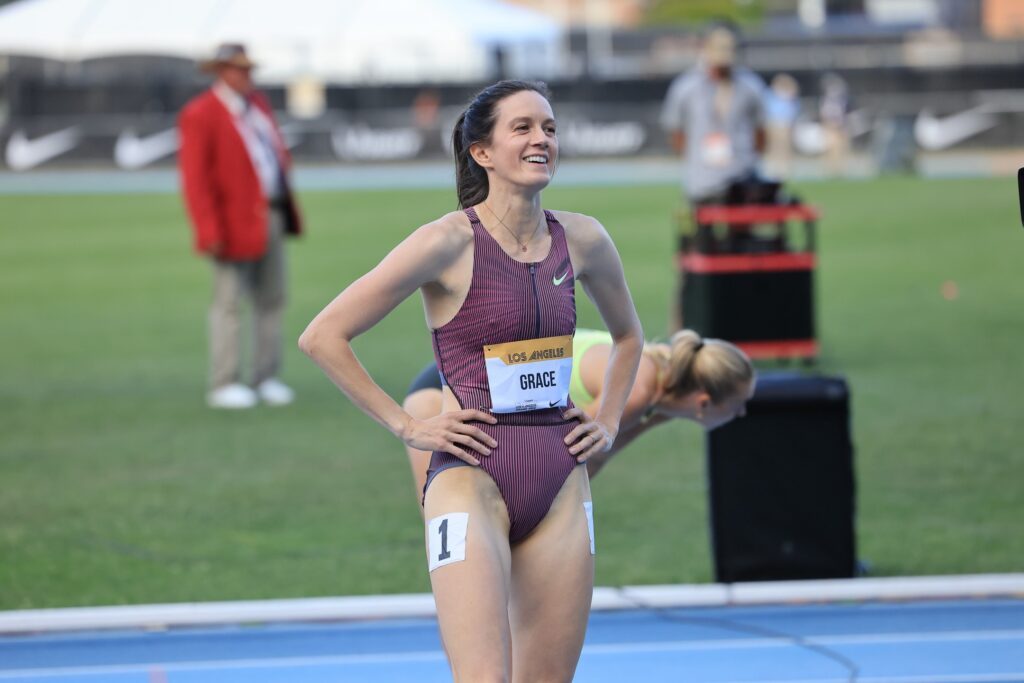
Kate Grace’s first race back after giving birth to her child. Image used with permission.
Can I Return to Sport as Strong as Before My Pregnancy?
It’s possible for elite athletes to return to sport postpartum, and meet or exceed pre-pregnancy performance, but the timing will vary for each athlete and her journey.1,2 For instance, Paula Radcliffe won the 2007 New York City Marathon 10 months postpartum, Nordic skier Kikkan Randall won Olympic gold as a mother of a toddler, and Elina Svitolina reached the semi-finals of Wimbledon eight months after giving birth.
On the other hand, tennis player Serena Williams and climber Beth Rodden faced more challenges in their postpartum journeys. As Nicole Farnsworth noted, “each woman’s journey is different, and we need more scientific research on postpartum female athletes.”
In the meantime, we can address some of the common myths around this topic, and provide nutrition strategies you can use to optimize your chances of returning to sport.
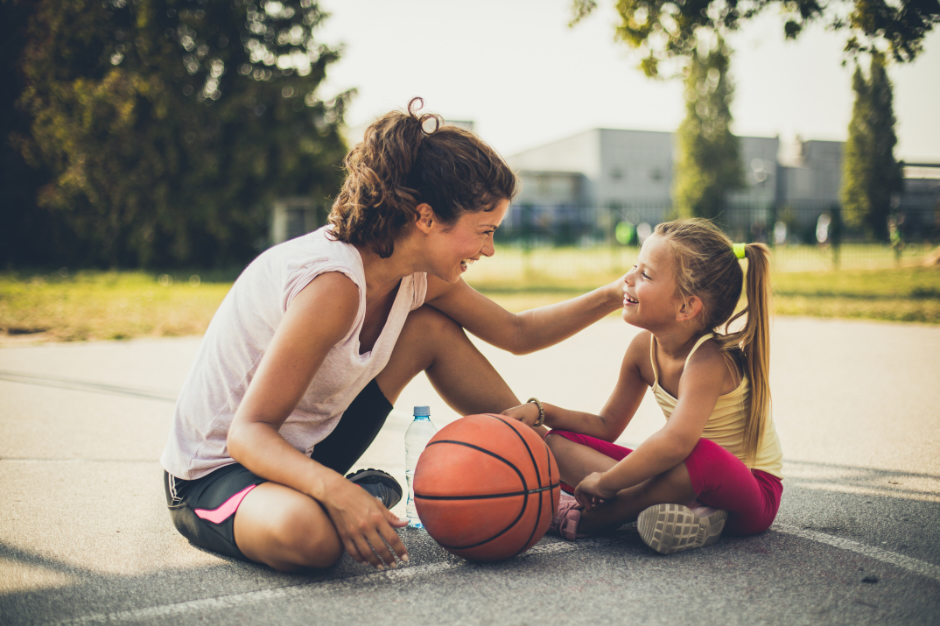
Canva Pro Images
Busting the Myth: Will Exercise Decrease My Milk Supply?
A common myth is that exercise will reduce your milk supply. However, factors such as not drinking enough fluid, poor nutrition, and insufficient caloric intake – which are sometimes associated with intense exercise – are more likely to influence milk production than the exercise itself.3
Scientific literature reviews also suggest that mild to moderate exercise doesn’t disrupt milk performance or the baby’s growth, as long as the mother stays hydrated and maintains proper nutrition.4-7 In a study involving competitive runners, 90 women (84.1%) reported running while lactating (i.e., breastfeeding or chestfeeding). Most of these women felt that running had no effect on their lactation.8

Training Tip
Insufficient nutrition and calories, rather than mild to moderate exercise, is shown to impact milk supply. “Hydration needs are also higher for milk production,” said Farnsworth. “Add in sweating from a workout and it’s even more important to stay on top of your hydration.”
How Many Extra Calories Do I Need?
Breastfeeding/chestfeeding is a journey that demands extra energy. Experts recommend an additional 300-600 calories daily to sustain milk production for one infant.9-11 Some mothers may require less or more calories.
“There’s variability in these numbers,” said Farnsworth. “Some individuals fall outside the milk production spectrum and produce more or less milk.”
Grace worked with her coach to make sure she consumed the extra calories and adjusted her training load to make sure it matched her caloric intake. “We brought my overall training load down until I finished breastfeeding because we knew that breastfeeding was going to need around 500 more calories a day.”
Beyond calories, a balanced diet rich in carbohydrates, healthy fats, and vegetables is essential. Farnsworth advises busy mothers to keep nutrient-dense snacks close at hand.
“Consider setting up a snack station near your lactation area stocked with options like granola bars, trail mix, and full-fat dairy products,” suggested Farnsworth. “And don’t forget calorie-containing beverages such as smoothies, juice, and milkshakes, which have the added benefit of keeping you hydrated.”
For those planning workouts, Farnsworth emphasized the importance of trying to eat a meal or snack every three to four hours. “Consistency in snacking throughout the day helps maintain energy levels and prevents working out in an energy deficit.”
Grace echoed the importance of a snacking routine. “I essentially made a rule for myself that I had to eat after I nursed. I was surprised I had to prioritize it… I found the easiest thing to do was to eat high-calorie foods. I was downing these peanut butter-based oat balls with some brewer’s yeast. Once a week we’d make this huge batch.”
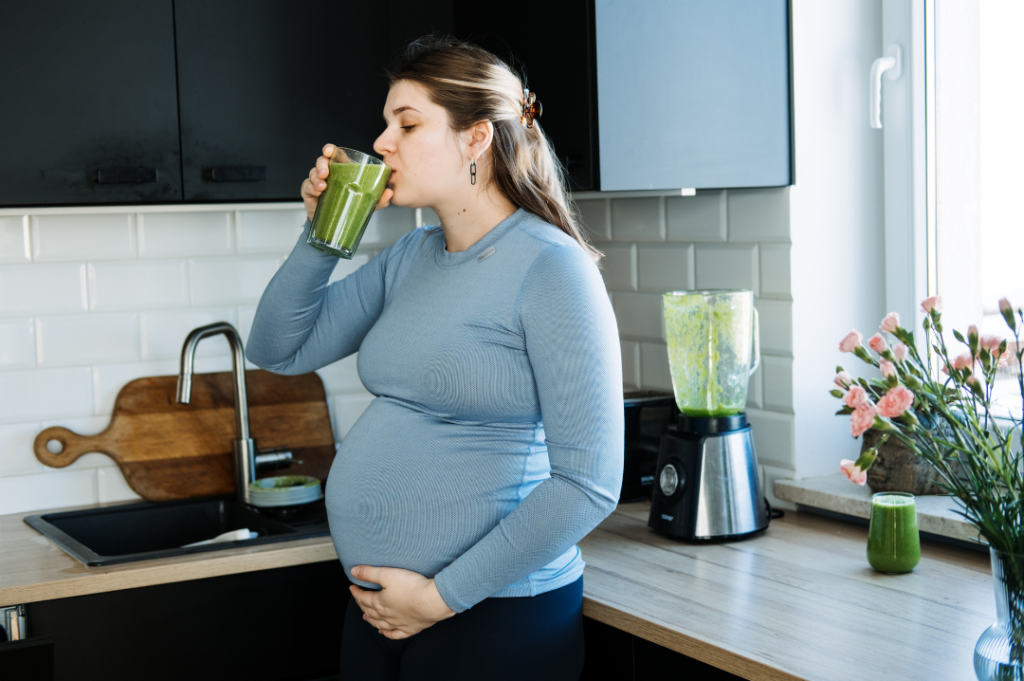
Canva Pro Images
Babies and Bones: Breastfeeding’s Impact on Bone Health
Lactating (breastfeeding/chestfeeding/pumping) can lead to bone density loss in mothers.12-14 This happens because there’s an increase in hormones like prolactin and PTHrP, which pull calcium from the mother’s bones to enrich her milk and can cause an increase in bone breakdown.15,16
Surprisingly, this bone density loss occurs regardless of whether the mother consumes the recommended amount of calcium or more.16,17 However, if her diet lacks sufficient calcium, the loss can intensify, taking even more calcium from her bones. But don’t worry – after weaning, a mother’s bone density typically bounces back.
To keep a mother’s bones in peak health, the U.S. National Institutes of Health advises pregnant and lactating women consume between 1000-1300 mg of calcium daily, depending on age. The World Health Organization suggests 1500-2000 mg daily for those living in areas with low calcium intake. Vitamin D is also essential. In the United States, the recommended amount of vitamin D is 15 micrograms per day during lactation.18
You might be asking yourself, “Does lactating then increase a mother’s risk of fractures?” The reassuring answer appears to be no. As long as a mother’s nutritional intake is sufficient, most evidence suggests that lactating does not increase the risk of osteoporosis or fractures even in the long term.3,16
Did You Know?
Breastfeeding/chestfeeding leads to a temporary loss of bone density. Experts recommend 1000-2000 mg of calcium daily (depending on your dietary intake and age) and 15 micrograms of vitamin D per day. These recommendations are from the U.S. National Institutes of Health and the World Health Organization; another country’s guidelines may differ.

Canva Pro Images
Don’t Forget About Iron: The Supplement Kind, Not the Dumbbells!
One common complication in athletes returning to sport 1 to 4 weeks after birth is perinatal anemia, or low-iron levels.9 To stay on top of your game, it is recommended to screen iron levels every 3-6 months.9
“Iron is really important,” said Farnsworth. “Some athletes experience anemia during pregnancy due to increased iron demand and expanding blood volume for the fetus. This anemia can continue into the postpartum phase or it may occur due to blood loss during delivery.”
Lastly, everyone’s journey is different. Returning to physical activity after childbirth requires an individualized approach to prevent injury and support recovery.
If you’re an elite runner, consider exploring the ‘Postpartum Guide for the Elite Runner’ developed by our Female Athlete Science and Translational Research (FASTR) program.
Get Deeply Researched Insights on Human Performance
Join our mailing list to get actionable performance tips and nuanced explanations of the science.

Flash Q&A with Kate Grace
What are your favorite activities to do outside of running?
I love being with my community and having dinners. I really enjoy getting into the mountains and hiking.
Where is your favorite place to hike anywhere in the world?
We got to Saint Moritz, Switzerland, for training camps. It’s absolutely gorgeous. If I could snap my fingers and be anywhere, I would be there or Park city where my mom lives.
Citations
- McGregor B., McGrath R., Young J. et al. (2023) A scoping review of the experiences of elite female athletes concerning pregnancy and motherhood. Sport in Society. 27(8): 1221–1253. https://doi.org/10.1080/17430437.2023.2270438
- Darroch F., Schneeberg A., Brodie R., et al. (2022) Effect of pregnancy in 42 elite to world-class runners on training and performance outcomes. Medicine & Science in Sports & Exercise. 55(1):93-100. https://doi.org/10.1249/MSS.0000000000003025
- Bø K., Artal R., Barakat R, IOC Medical Commission, et al. (2017) Exercise and pregnancy in recreational and elite athletes: 2016/17 evidence summary from the IOC Expert Group Meeting, Lausanne. Part 3—exercise in the postpartum period. British Journal of Sports Medicine. 51:1516-1525. https://doi.org/10.1136/bjsports-2017-097964
- Daley A.J., Thomas A., Cooper H., et al. (2012) Maternal exercise and growth in breastfed infants: a meta-analysis of randomized controlled trials. Pediatrics. 130 (1): 108–114. https://doi.org/10.1542/peds.2011-2485
- Mottola, M.F. (2002) Exercise in the postpartum period: practical applications. Current Sports Medicine Reports. 1(6):362-368. https://doi.org/10.1249/00149619-200212000-00010
- Bane, S. (2015) Postpartum exercise and lactation. Clinical Obstetrics and Gynecology 58(4):885-892. https://doi.org/10.1097/GRF.0000000000000143
- L’Heveder A., Chan M., Mitra A., et al. (2022) Sports Obstetrics: Implications of pregnancy in elite sportswomen, a narrative review. Journal of Clinical Medicine. 11(17):4977. https://doi.org/10.3390/jcm11174977
- Tenforde A.S., Toth K.E., Langen E, et al. (2015) Running habits of competitive runners during pregnancy and breastfeeding. Sports Health. 7:172–6. https://doi.org/10.1177/1941738114549542
- Afifi T., Barrack M. T., Casey E., et al. (2024) Infographic. Head to toe considerations for the postpartum endurance athlete. British Journal of Sports Medicine. 58(11). https://doi.org/10.1136/bjsports-2023-107624
- Woodroffe L., Slayman T., Paulson A.et al. (2024) Return to running for postpartum elite and subelite athletes. Sports Health. https://doi:10.1177/19417381241256973
- CDC, Maternal Diet and Breastfeeding. February 9, 2024. https://www.cdc.gov/breastfeeding-special-circumstances/hcp/diet-micronutrients/maternal-diet.html. Accessed July 30, 2024.
- Karlsson C., Obrant K., Karlsson M. (2001) Pregnancy and lactation confer reversible bone loss in humans. Osteoporosis International. 12:828–834. https://doi.org/10.1007/s001980170033
- Ferreira L.B., Tirapeli K.G., Silva C.C. et al. (2023) Lumbar spine bone mineral density in women breastfeeding for a period of 4 to 6 months: systematic review and meta-analysis. International Breastfeeding Journal. 18:68 https://doi.org/10.1186/s13006-023-00607-8
- Winter E.M., Ireland A., Butterfield N.C., et al. (2020) Pregnancy and lactation, a challenge for the skeleton. Endocrine Connections. 9(6). https://doi.org/10.1530/EC-20-0055
- Kovacs C.S. (2014) The role of PTHrP in regulating mineral metabolism during pregnancy, lactation, and fetal/neonatal development. Clinical Reviews in Bone and Mineralization Metabolism. 12:142–164. https://doi.org/10.1007/s12018-014-9157-6
- Athonvarangkul, D., Wysolmerski, J.J. (2023) Crosstalk within a brain-breast-bone axis regulates mineral and skeletal metabolism during lactation. Frontiers in Physiology. 14:1121579. https://doi:10.3389/fphys.2023.1121579
- Kovacs C.S. (2001) Calcium and bone metabolism in pregnancy and lactation. The Journal of Clinical Endocrinology & Metabolism. 86(6): 2344–2348. https://doi.org/10.1210/jcem.86.6.7575
- National Institutes of Health Office of Dietary Supplements. Vitamin D Fact Sheet for Health Professionals. Updated July 26, 2024. https://ods.od.nih.gov/factsheets/VitaminD-HealthProfessional. Accessed July 30, 2024.
Playbook Terms of Use & Copyright
©2023-2024

